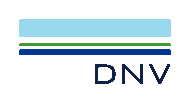Follow-up, sharing of experience and correction are important elements within energy management. The main purpose of reviewing is to collect enough results and analyses from the energy management system so that the management can conclude whether the system is robust enough to meet the goals. The management should regularly review the system and evaluate whether the company’s energy policy should be altered.
![]() What should be done
What should be done
At scheduled intervals, the top management shall review the energy management system of the organisation to ensure that it continues to be suitable, sufficient and effective. Nonconformities and corrective measures should be addressed, and the management should conclude and make decisions regarding the way forward.
The review should include:
- Assessment about this year’s energy performance and status in accordance with the company’s energy policy, efforts, goals and action plans.
- Follow-up from previous reviews.
- Review of nonconformities throughout the year, internal audit reports, and the status of the corrective and preventive measures.
- Any changes to the expected energy performance in the upcoming period.
- Changes in framework conditions and regulatory requirements.
- Trends and stakeholders focus areas. This may include external communication, cooperation with other organisations, R&D and the like.
- Recommendations for improvements.
In this process, it should also be decided whether the operator’s energy performance, energy policy, KIPs, goals and resource allocation should be changed.

![]() Who should be involved
Who should be involved
The management review should include the company’s top management, the management’s representative and the energy manager.
![]() What should be documented
What should be documented
The management review could result in changes to the company’s or the installation’s energy policy, indicators or resource allocation. It is important that these changes are documented. Records from the management review shall be stored. This includes minutes and the decisions made.
![]() Challenges and opportunities
Challenges and opportunities
Experience shows that thorough preparation is important and that conclusions must be made, and agreed actions must be followed-up. In addition, the management review should be conducted separately the first time, but may subsequently be coordinated with other QHSE activities.
![]() Where do you find this in ISO 50001?
Where do you find this in ISO 50001?
- 4.7 Management review
- 4.7.1 General
- 4.7.2 Input to management review
- 4.7.3 Output from management review

